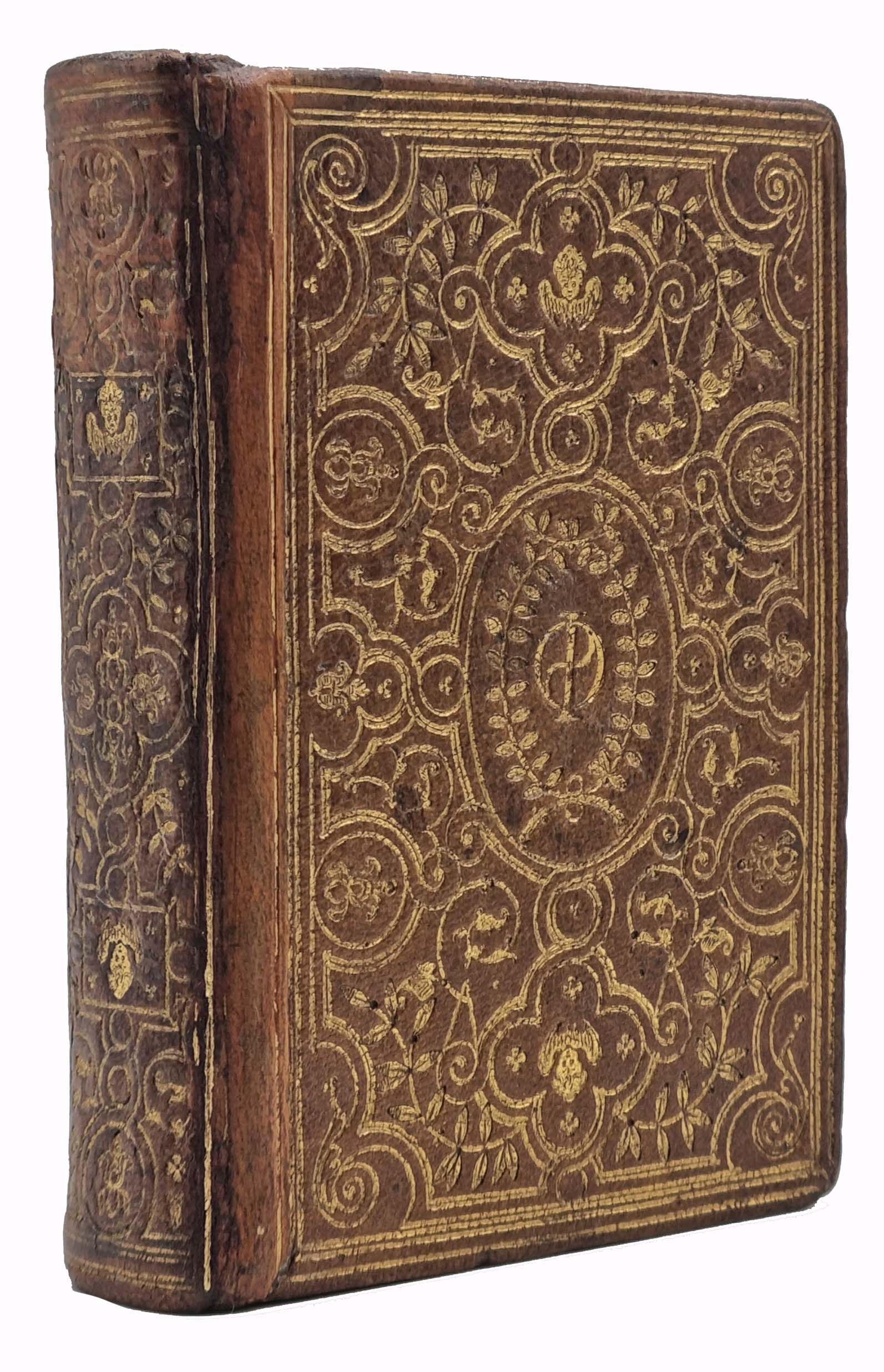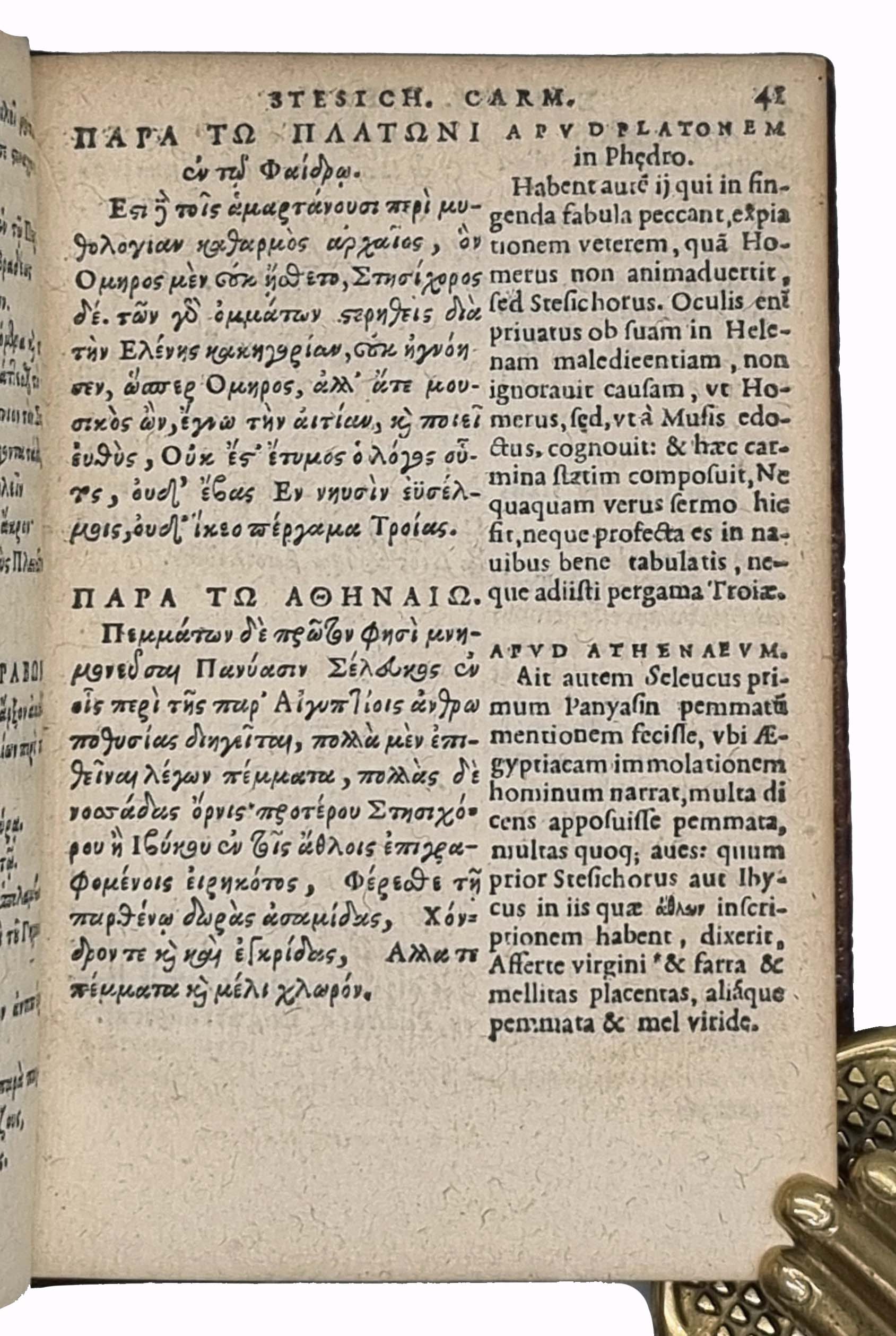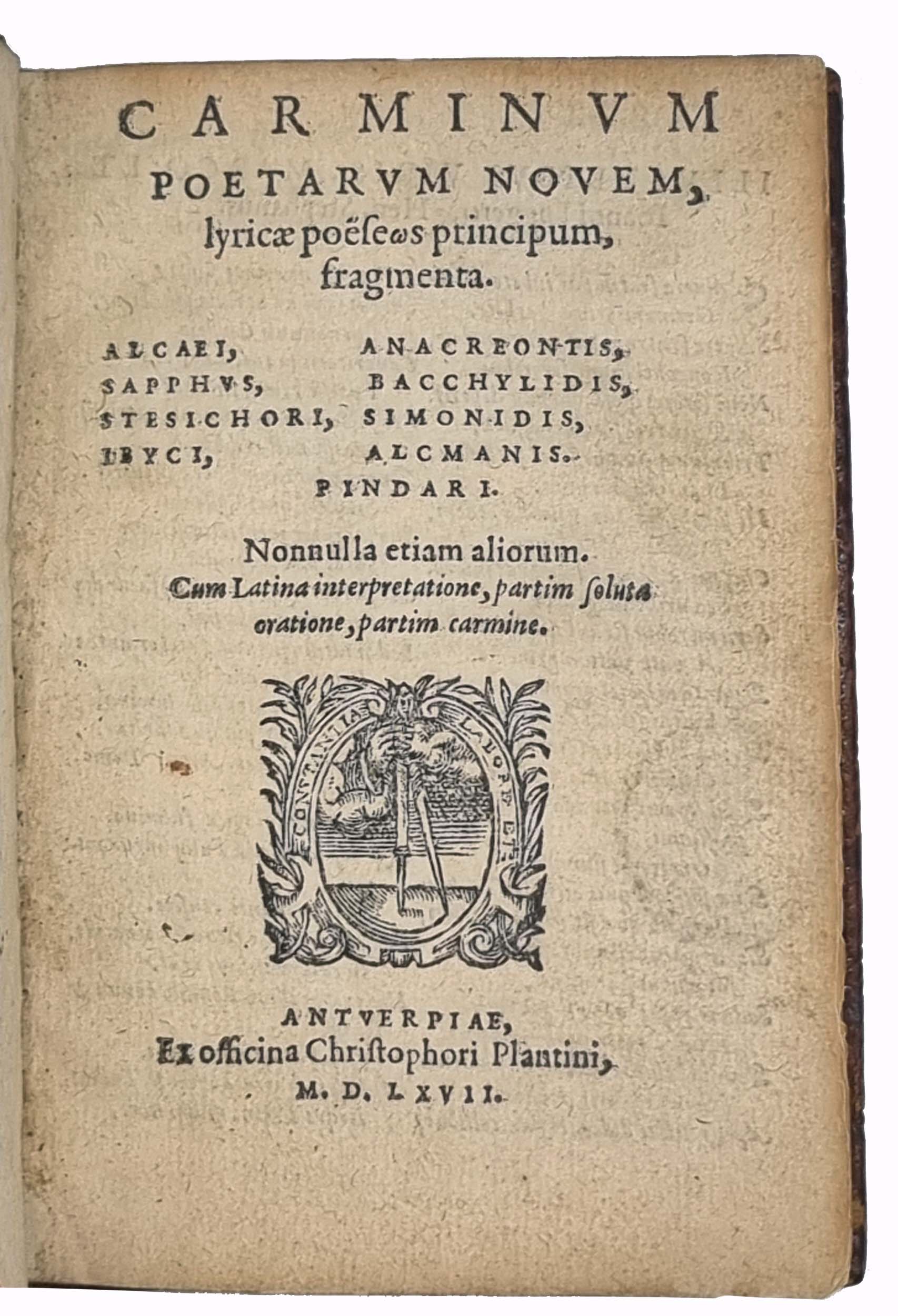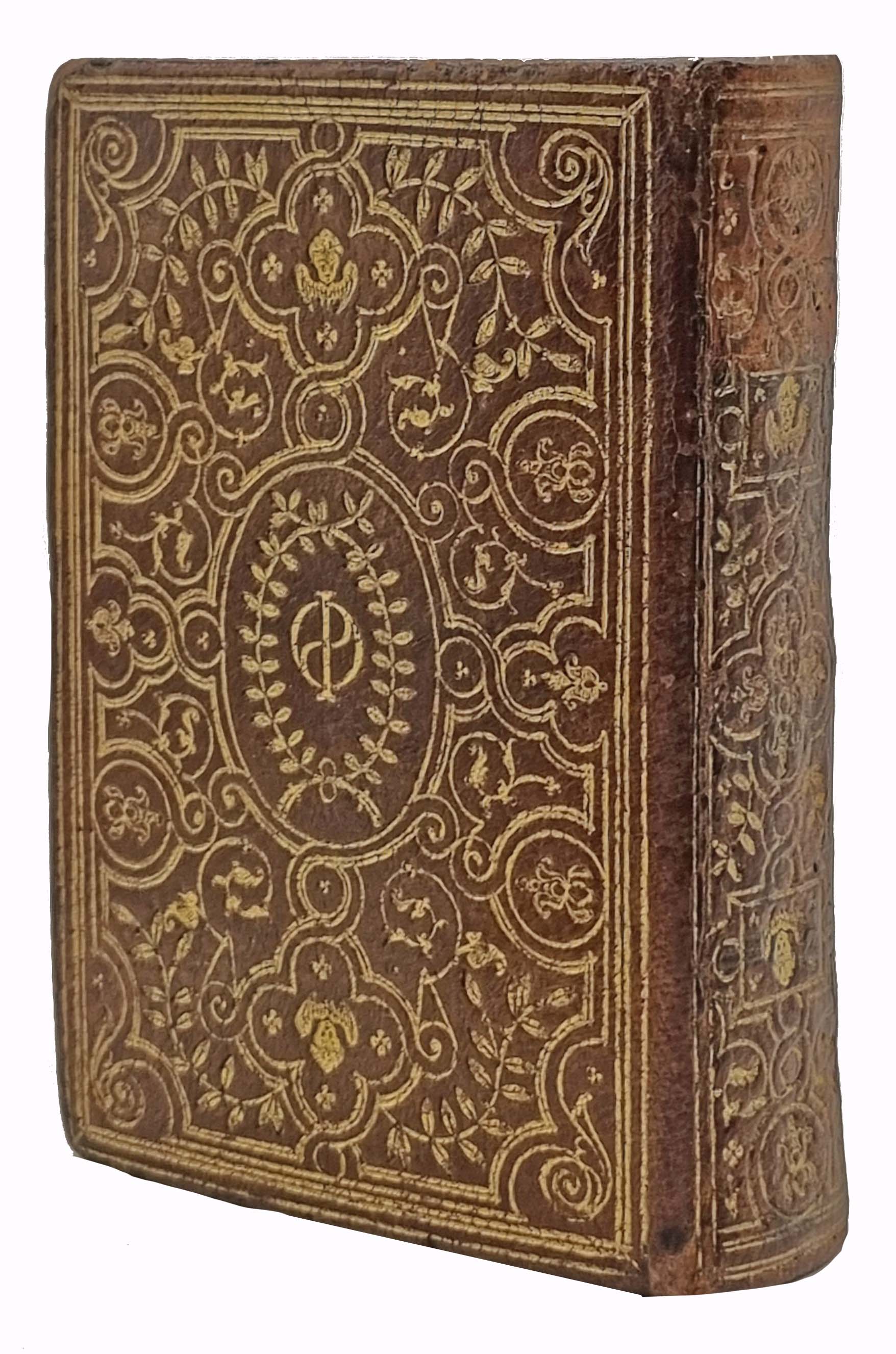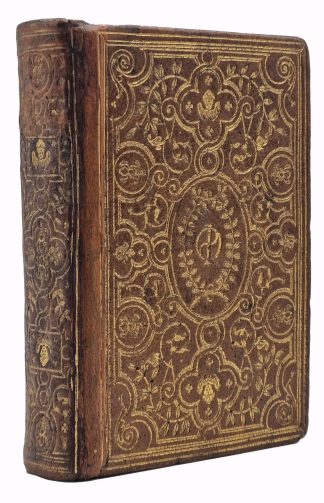[CARMINA] [with] PINDAR
STUNNING FANFARE BINDING
Carminum poetarum novem, lyricae poeseos principum, fragmenta.(with)Olympia, Pythia, Nemea, Isthmia. Caeterorum octo lyricorum carmina, Alcaei, Sapphus, Stesichori, Ibyci, Anacreontis (etc)
Antwerpen, ex officina Christophe Plantin, 1567£5,750.00
16mo. Two works in one. 1) pp. [iii] 4 196 [iv]. A-M8, N4. 2) pp. 270 [ii]. a-r8 (r8 blank). Greek and Latin Letter in double column. Both titles with Plantin’s small woodcut compass device, book-label “Bibl. Lamoniana” on pastedown, those of Henri Bonnasse and G. de Miribel below, R. Zierer’s on fly, C18th library stamp a crowned “L” in blank margin of A2. Light age yeallowing, trimmed a little close at head, just touching the odd headline, occasional mark or stain. Very good copies in stunning contemporary French tan morocco richly tooled in gilt to an early fanfare design, covers bordered with a triple gilt rule, finely worked to a fanfare design with double and single gilt rules, scrolls, and leafy branches around a central oval with olive wreath, winged cherubs above and below, monogram gilt at centre, spine double gilt ruled in a single panel, finely worked to a similar fanfare design in long, with winged cherub tool in small compartments, edges, head and tail bands gilt ruled and hatched, a.e.g. upper joint restored, in cloth folding box.
Beautifully printed and rare edition of this collection of Greek poetry including the works of Pindar, edited by Henri Estienne, in a stunning contemporary French fanfare binding, very much in the style of those executed for Jaques August de Thou at the same period. They contain selected works by the Greek poets Alcaeus, Sappho, Stesichorus, Ibycus, Anacreon, Bacchylides, Simonides and Alcman and includes also many other short poems concerning these poets by contemporary and later authors, both Greek and Latin.“Edition in two volumes, but each presented as a separate publication, of some Greek poets, in Greek with Latin translation. Edited and translated by Henricus Stephanus.” Voet.
The binding is very similar a fanfare binding made for Jaques August de Thou in the British library, shelf-mark c19b12, using the same, or a near identical, winged cherub tool, and is very similar in overall design. This binding is in De Thous arms as a bachelor so cannot have been made before 1587. See also two other bindings in the BL, both for De Thou, shelf-marks c19b11, c19b16 also with very similar bindings. The fanfare style had its beginnings in around 1560, gradually becoming more complex and intricate, covering the entire binding with small compartments with torsades, spirals of leafy stems, and branches, the whole worked with a multitude of small tools. The style reached its peak towards the end of the C16th. Needham points out “It was much more common for fanfare bindings to be found on special presentation copies and gifts” as they were so time consuming and expensive to make “A finite library of good books could be bound luxuriously as a cabinet of treasures” We have been unable to identify the first owner whose monogram is stamped at the centres.
The work has prestigious later provenance belonging to Chrétien-François de Lamoignon (Paris, 1735 – 1789) a French statesman and magistrate. Lamoignon was the Keeper of the Seals of France from 8 April 1787 to 14 September 1788. In this position, he was responsible for issuing the Edict of Versailles in 1787, which granted civil status and freedom of worship to France’s Protestants, and for the abolition of judicial torture. On his death his magnificent library was bought in its entirety by Jean Gabriel Mérigot who made a catalogue for its sale in 1791.
Voet IV 2056. Adams P1229. USTC 401318 and 411361In stock


